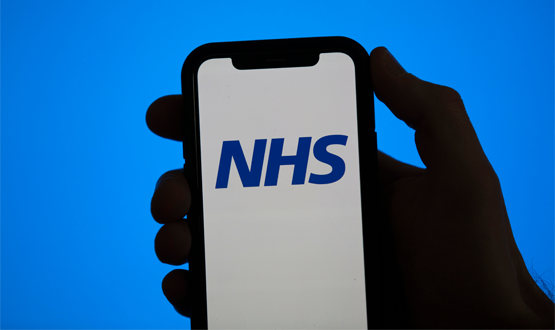Interview: Tim Kelsey
- 29 October 2015

Tim Kelsey believes that things are changing in health and social care, as the sectors face up to what may be their greatest ever financial challenge; and the huge reform agenda required to address it.
NHS England’s director of patients and information says there has been a “remarkable and great collaboration” between the various bodies involved in health and social care over the past 18 months.
He says this has created a consensus around the “priorities for action in relation to putting data and technology to work for patients and the professionals who serve them.” The next step is putting these priorities into action.
Starting with a plan
The National Information Board, which Kelsey also chairs, published its latest plan for NHS technology last November.
‘Personalised Health and Care 2020’ – which the NIB described as a ‘framework’, rather than a strategy’ – was intended to support NHS England’s ‘Five Year Forward View’, which had been published the previous month.
The 5YFV, driven by NHS England chief executive Simon Stevens, called for additional funding and new models of care delivery to help close a projected £30 billion gap between effectively flat NHS funding and rapidly rising demand by 2020-21.
Stevens went on to secure cross-party support in the subsequent general election campaign for what health secretary Jeremy Hunt now calls “the NHS’ own plan”; which is due to be backed by £8 billion of additional funding over the course of the present parliament.
However, this still leaves the NHS looking for £22 billion of efficiency savings; more, if social care and public health continue to be cut. This makes the success of the ‘vanguard’ and other projects designed to test out new funding models, new ways of working, and ‘integrated’ health and social care essential.
None of these will be delivered without new IT to drive planning, deliver health and social care information to those who need it, and engage the public in new ways.
Details about the specific workstreams to support the implementation of the NIB strategy were released in June and include improving acute and hospital services by making more extensive and effective use of electronic health records and a shift to digital channels for patients.
“We have been engaged collectively on a gigantic piece of work to provide real tangible roadmaps for delivery of these priorities,” says Kelsey. “We need to focus now on delivery and implementation: We have achieved a watershed in alignment of the vision and strategy.”
Proving the benefits of technology
As well as implementing the technology available, the NHS needs to get good at proving the benefits. This is not something it has traditionally excelled at, Kelsey acknowledges.
That’s a problem, because it can lead to scepticism about the kind of return on investment that technology can really deliver, and difficulties in putting together business cases to roll out tried – sometimes even well established – technologies.
So, Kelsey insists that technology has a huge role to play in delivering the 5YFV savings, but admits that articulating and proving the benefits of technology in healthcare is a “tricky thing”.
Even so, he identifies three levels of benefit. The first is human benefit; meaning there is evidence to support the idea that digital services empower people to maximise health-seeking behaviours and therefore live longer, healthier lives.
He adds that proving this will be a “big priority” from the end of this year, after the government’s spending review is published on 25 November.
“We’re making some progress on this, but not enough. We will be getting very sharp on understanding how we can describe the impact that these technology strategies have on health seeking behaviours.”
The second is clinical benefit. Kelsey admits there are lots of examples from around the world of electronic medical records being deployed in ways that increased the burden on clinical practice and, as a result, “didn’t win hearts and minds”.
But he says there are also lots of good examples of co-design with clinical partners; that have made deployments very successful.
Kelsey believes the NHS needs to respect the fact that many committed clinicians are anxious and sceptical about the degree to which digital solutions can add value and must work with them to prove the clinical value.
It’s all down to economics
The third benefit is economic benefit. Kelsey argues that NHS England is in a good position to be able to describe the contribution of technology to the overall savings target set out in the 5YFV, as well as the benefits of deploying specific digital systems at a local level.
He presented early findings at a NIB meeting in June that suggested savings of £8.3 billion to £13.7 billion should be achievable by using technology across the six key areas of; acute use of barcodes and electronic health records, transforming general practice, using data for outcomes and research, improving out of hospital care, integration with social care, and digital channels for patients.
Digital Health News asked for a copy of the economics benefits report on which the figures were based, under the Freedom of Information Act.
It was refused one on the grounds that it forms part of a policy making process. Digital Health News has taken the case to the Information Commissioner’s Office, which is investigating.
Meanwhile, Kelsey says his account to the NIB was a “very, very first estimate on the enabling contribution that technology could make to the delivery of the Five Year Forward View.” A lot of work has been done to refine that since then, he adds, but the savings now identified are “still significant”.
“We have a very well evidenced case for saying there are some very significant direct economic efficiencies that technology can deliver and also much broader enabling role that technology plays in delivering benefits across the broad scope of the FYFV,” Kelsey says.
“We are making a case to the government for investment in technologies that we believe and have good evidence for, will further delivery of the FYFV objectives.” All eyes will now be on the Chancellor on 25 November. A lot is riding on the outcome of the review.

|




